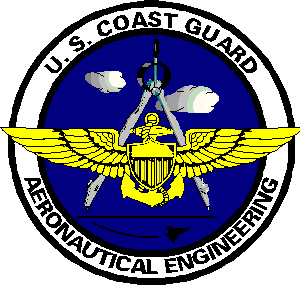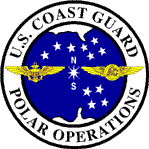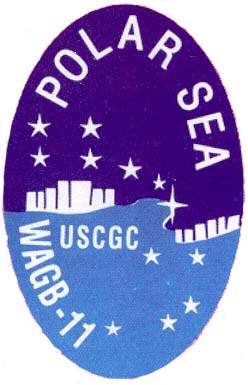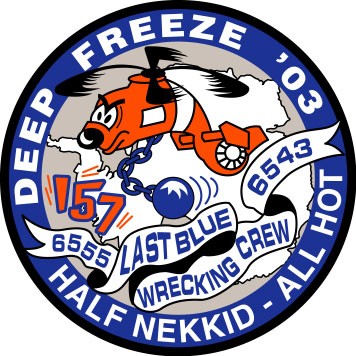


 Deep
Freeze '03: Hobart to Mcmurdo Station
Deep
Freeze '03: Hobart to Mcmurdo Station


 Deep
Freeze '03: Hobart to Mcmurdo Station
Deep
Freeze '03: Hobart to Mcmurdo Station
15 Dec 2002 – 30 Dec 2002
After much needed R&R in the ports of Sydney and Hobart, Australia we got down to business. We on-loaded gear and scientists in Hobart and headed south. Mostly the scientists just did water samples to test salinity and nutrient levels. Nothing really exciting though. About ten days out of Hobart we started to see icebergs. We reached the edge of the Ross Ice Shelf on the 29th of December. On the 30th of December the avdet departed the ship and flew to Mcmurdo Station Antarctica. While in Antarctica we fly our helos in support of National Science Foundation research. We also support the Polar Sea and the NSF's icebreaker Nathaniel B. Palmer. Some of the things we assist the NSF with include setting up automated weather stations (AWS), and rounding up and tagging seals and penguins. We also assist in taking peolple in and out of remote camps located near Mcmurdo.
Here are some of the first icebergs sighted during DF '03
 The
first iceberg sighted on DF '03.
The
first iceberg sighted on DF '03.
 This
iceberg is bound in sea ice, which is also called pack ice.
This
iceberg is bound in sea ice, which is also called pack ice.
 This
iceberg is an older one. Over time the wind and sea have eroded one
face of the iceberg creating this interesting shape.
This
iceberg is an older one. Over time the wind and sea have eroded one
face of the iceberg creating this interesting shape.
![]() This
iceberg is so big that it gets a name. B-15 is approximately the same
size as the state of Vermont!
This
iceberg is so big that it gets a name. B-15 is approximately the same
size as the state of Vermont!
Dry (but frozen) land at last! We made it to Mcmurdo on the 30th of December.
![]() Mcmurdo
as seen from Discovery Hut. Observation hill is seen in the
background. Every one in Mac Town just calls it Ob Hill.
Mcmurdo
as seen from Discovery Hut. Observation hill is seen in the
background. Every one in Mac Town just calls it Ob Hill.
 After
climbing up Ob Hill you get a much better feel for the size of Mac
Town. During the summer months Mac Town can have up to 1200
residents. The population shrinks to under 200 during the winter
months.
After
climbing up Ob Hill you get a much better feel for the size of Mac
Town. During the summer months Mac Town can have up to 1200
residents. The population shrinks to under 200 during the winter
months.
 On
the other side of Ob Hill is Scott Base which is operated by New
Zealand. The population of Scott Base is only about 85 during the
summer.
On
the other side of Ob Hill is Scott Base which is operated by New
Zealand. The population of Scott Base is only about 85 during the
summer.
 These
trucks are really cool! Every man needs a set of these things!
These
trucks are really cool! Every man needs a set of these things!
Supposedly there is very little snow in Antarctica during the summer. However, between the 20th and 22nd of January we had quite a blizzard blow up here.
![]() The
building in the background houses the dining hall, store, computer
kiosk, and there are 4 person rooms on the second floor.
The
building in the background houses the dining hall, store, computer
kiosk, and there are 4 person rooms on the second floor.
![]() The
tall buildings in the back are the operations centers.
The
tall buildings in the back are the operations centers.
 After
the blizzard let up we were able to survey the impact on our
aircraft. As you can see, even with the snow covers on...
After
the blizzard let up we were able to survey the impact on our
aircraft. As you can see, even with the snow covers on...
 ...the
snow is so fine that it can blow into any little gap filling the
engine and transmission areas with packed snow.
...the
snow is so fine that it can blow into any little gap filling the
engine and transmission areas with packed snow.
 A
view from the rear showing the exhaust packed with snow.
A
view from the rear showing the exhaust packed with snow.
 Here
we are using the “Herman Nelson” heater to blow hot air
on the aircraft to melt the snow.
Here
we are using the “Herman Nelson” heater to blow hot air
on the aircraft to melt the snow.
Here are some shots of the Ross Island area as well as the Dry Valleys which are across the Ross Ice Shelf from Mac Town.
 Here
is a shot of Mt Erebus. Erebus is an active volcano on Ross Island.
Here
is a shot of Mt Erebus. Erebus is an active volcano on Ross Island.
![]() Mt.
Erebus is in the distance, with Scott Peninsula in the foreground. If
you look carefully in the center of Scott Peninsula you can barely
see Mac Town.
Mt.
Erebus is in the distance, with Scott Peninsula in the foreground. If
you look carefully in the center of Scott Peninsula you can barely
see Mac Town.
![]() This
shot and the next are of different peaks in the Trans Antarctic
mountain range.
This
shot and the next are of different peaks in the Trans Antarctic
mountain range.
![]() This
picture and the next two are different glaciers in the Dry Valleys.
This
picture and the next two are different glaciers in the Dry Valleys.
Hut Point on Scott Peninsula is one of the historic sites in Antarctica . Located there is Discovery Hut which was built by Robert Falcon Scott from New Zealand. Discovery Hut was last used in 1915. It remains in the same condition today as it was then.
![]() Plaque
located near Discovery Hut.
Plaque
located near Discovery Hut.
 Cooking
area inside Discovery Hut.
Cooking
area inside Discovery Hut.
 Sleeping
platform inside Discovery Hut.
Sleeping
platform inside Discovery Hut.
 Storage
area inside Discovery Hut.
Storage
area inside Discovery Hut.
 100
year old oatmeal...wonder if it is still good?
100
year old oatmeal...wonder if it is still good?
 Nice
shot of the 6543 over Discovery Hut.
Nice
shot of the 6543 over Discovery Hut.
Here are some shots of the Polar Sea doing its thing.
![]() Polar
Sea is working hard to cut the channel so the supply ship can get to
Mcmurdo.
Polar
Sea is working hard to cut the channel so the supply ship can get to
Mcmurdo.
 Polar
Sea with the Trans Antarctic range in the background.
Polar
Sea with the Trans Antarctic range in the background.
 Polar
Sea tied up at the ice pier.
Polar
Sea tied up at the ice pier.
![]() The
6543 landing on the Polar Sea.
The
6543 landing on the Polar Sea.
Copyright 2003 – 2006 by Mick Chaney. All rights reserved.